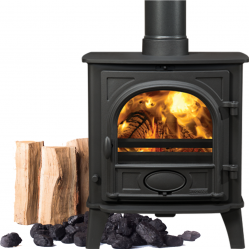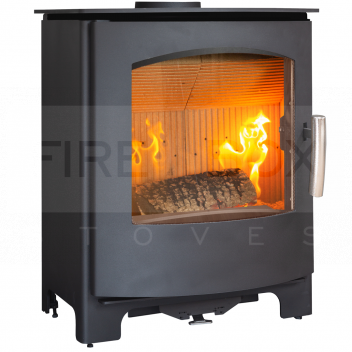This product qualifies for the following promotions
- SAVE TODAY 25% Discount Applied - Speak to your local showroom or installer for further discounts and special offers & promotions availaible.
Technical Details
| Product Title | Mendip Churchill 5 Dual Control SE Stove, 5kW, Black, ECODESIGN Ready |
|---|---|
| Product Keyword | Mendip Churchill 5 Stove, Dual Control, 5kW Heat Output, Black Stove, ECODESIGN Ready |
| Energy Efficiency | A+ |
| SIA Ecodesign Ready | Yes |
| Output (Nominal) | 5kW |
| Output (Maximum) | 7kW |
| Smoke Control (DEFRA) | Yes |
| Boiler Stove | No |
| Colour | Black |
| Flue Outlet Size | 125mm - 5in |
| Fuel | Multifuel |
| Height | 606mm |
| Width | 510mm |
| Depth | 380mm |
| Nominal Output (Range) | 3kW - 5kW |
| Width (Range) | 500mm - 600mm |
| Nett Efficiency (%) | 81 |
| Max log length | 400mm |
| Distance to Combustibles (Side) | 300mm |
| Distance to Combustibles (Rear) | 100mm |
| Style | Modern / Contemporary |
| We Like! | The Churchill 5 offers a softly curving door, contemporary design including an easy open chromium handle, which adds sophistication. The Churchill radiant model range is available in a choice of outputs, the Churchill 5 giving you 5kW output, an 8kW model as well as a 10kW also being in the range. The full Churchill range offers an external air connection as well as being EcoDesign Ready. |
| Centre of Flue to Rear | 130mm |
| Distance to Combustibles (Top) | 375 |
| Direct Air Kit Available | Yes |
| 12mm Hearth Compatible | Yes |
| Heat Shield Available | Yes |
| Height (Range) | 600mm - 700mm |
Product Description
Mendip Churchill 5 Dual Control SE Stove
The Mendip Churchill 5 Dual Control SE Stove combines contemporary design with practical functionality, making it a standout heating appliance. It's ideal for those seeking an environmentally responsible and efficient wood-burning stove.
- Heat Output: 5kW - perfect for warming small to medium-sized rooms.
- Color: Classic Black finish that complements a variety of interior designs.
- ECODESIGN Ready: Meets the latest standards for reduced emissions and high efficiency.
- Dual Control System: Allows for precise control over both the air supply and burning rate.
- Cast Iron Construction: Delivers durability and long-lasting performance.
- Airwash System: Keeps the glass door clear for an unobstructed view of the flames.
- DEFRA Approved: Certified for use in smoke control areas.
- Large Viewing Window: Offers a panoramic view of the fire for an immersive experience.
- Easy to Use: User-friendly controls and maintenance.
- Contemporary Design: Sleek, modern aesthetic that adds to your home's decor.
File Downloads
Reviews
Multi Fuel Stoves > Contemporary Multifuel Stoves

Contemporary Multifuel Stoves
These stoves combine new technologies with new designs to bring you the very best selection of contemporary multifuel stoves on the market. Beautifully designed, often with clean lines and large glass windows, our range of contemporary multifuel stoves are a perfect addition to any modern or new-build home. Large glass windows on stoves have become increasingly popular, allowing the user to enjoy the full view of the relaxing flames whilst new technology has allowed for better heat retention and efficiency, regardless of how big the glass is.
We supply a very large range of contemporary multifuel stoves, from freestanding cylindrical multifuel stoves, to wall-hanging (even ceiling-hanging!) contemporary multifuel stoves and everything in-between. Our contemporary multifuel stoves are also available in a multitude of sizes and outputs, depending on your requirements, and many even have different stand or log store options to provide ample choice. Whilst this huge range of choice is beneficial for some, we understand it can be confusing for others, so why not come and have a chat with us if you are feeling overwhelmed, and we can go through the most suitable options with you.





